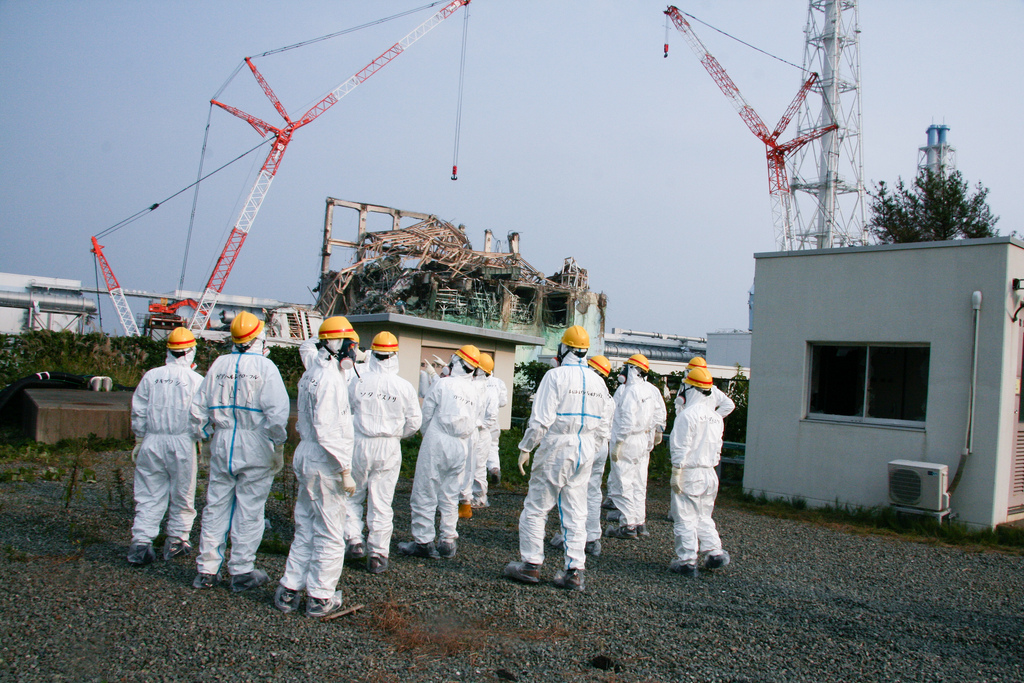How the Fukushima disaster went from bad, to worse, to cursed
11/06/2015 / By Greg White

The idea behind synergy is that when two bad things happen, a third event, even worse than the previous two events combined, follows. It has the faint undertones of Murphy’s Law, which states that anything that can go wrong, will go wrong. These abstract maxims turned into concrete realities at the Fukushima Power Plant, where conditions have escalated from bad, to extremely out of control.
Synergy was set off by a chain reaction that occurred in March 2011. First, a magnitude 9.0 earthquake rocked the sea floor off the coast of Japan. Then, a massive tsunami sprung forth from the bowels of the ocean. The tsunami then rolled into the Fukushima Daiichi Power Plant, causing the world’s worst nuclear accident since the 1986 Chernobyl catastrophe. If synergy could be boiled down to a formula, it would be: one earthquake, plus a tsunami, equals a nuclear catastrophe on par with Chernobyl.
Murphy’s Law has gripped the Fukushima site ever since the tsunami decimated the power plant in 2011. Efforts to clean up the site have been slow and tedious with new problems creeping up around every corner, almost every day.
Fukushima radiation hits rock bottom and melts it
The Fukushima narrative is spiraling down a path of complete and utter ruin. It’s been more than four years after the disaster, and Murphy’s law refuses to be broken. For example, just this October, the Japan Times reported that “Extremely high radiation levels and the inability to grasp the details about melted nuclear fuel make it impossible for the utility to chart the course of its planned decommissioning of the reactors at the plant.”
In other words, the Tokyo Electric Power Company (TEPCO), the company in charge of the power plant, has no idea how to clean up, let alone contain, the disaster. It’s not just that there is no end in sight; officials don’t even know what means are necessary to reach an end.
One would think that radiation levels would have waned after all these years, but unfortunately, they have not. TEPCO just detected radiation levels as high as 9.4 Sieverts per hour outside reactor No. 1. According to a direct quote from the press release, “People exposed to the maximum radiation dose for some 45 minutes will die.”
9.4 Sieverts worth of radiation has a tremendous amount of potency. Levels exceeding one Sievert are rare in everyday life, so much so that officials resort to millisieverts (mSv = 1/1000th) or microsieverts (uSv = one millionth of a Sievert) when measuring radiation. Eight Sieverts is enough to produce vomiting, severe headaches, fever and a zero percent survival rate.
In addition, reports say that TEPCO had initially planned to look inside the containment vessel back in August with the use of a remote controlled robot. However, high radiation levels stymied these efforts. Even cold steel could not withstand the radiation coming from the power plant.
Moreover, according to Counter Punch, the problem’s not just confined to reactor No. 1; even reactor No. 2 exhibits high levels of radiation:
“Unfortunately, not only is radiation sizzling outside of reactor No. 1, but a pipe connection at reactor No. 2 also shows extremely high radiation levels. Reactor No. 2 is where the hot melted radioactive core (corium) still has not been located.”
A wound that won’t stop bleeding
The Fukushima catastrophe isn’t bound to the power plant, but is spreading across the globe. Nuclear fallout continues to entomb the Earth, and radiation leaking from the disaster has even spread across the Pacific Ocean. It’s an open wound on the planet’s surface that won’t stop bleeding.
Some call the Fukushima accident a disaster. Many, however, including those who have seen and experienced its effects firsthand, call it a curse. With the way things are going, unless we find a way to solve the problem, the situation could only go from bad to worse.
Source:
Submit a correction >>
Tagged Under:
murphy's law, radiation level, Synergy
This article may contain statements that reflect the opinion of the author
RECENT NEWS & ARTICLES
COPYRIGHT © 2017 FUKUSHIMAWATCH.COM
All content posted on this site is protected under Free Speech. FukushimaWatch.com is not responsible for content written by contributing authors. The information on this site is provided for educational and entertainment purposes only. It is not intended as a substitute for professional advice of any kind. FukushimaWatch.com assumes no responsibility for the use or misuse of this material. All trademarks, registered trademarks and service marks mentioned on this site are the property of their respective owners.




















